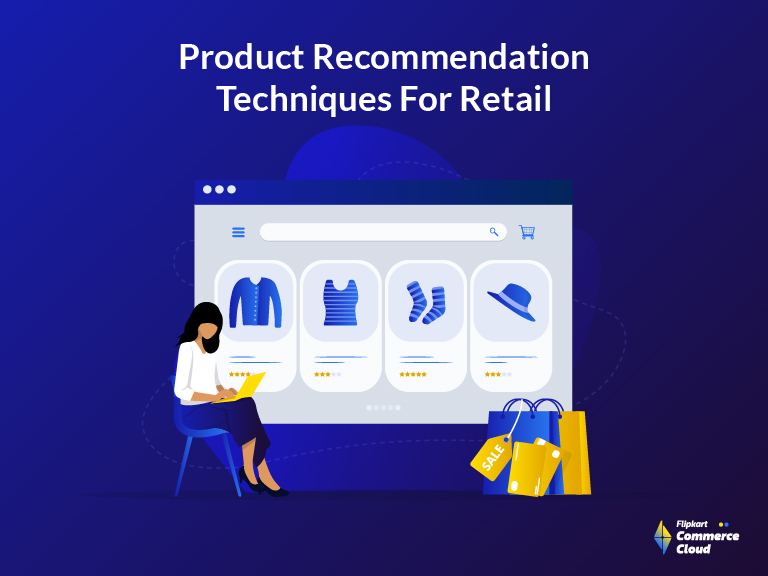
7 Innovative Product Recommendation Technique Examples For Modern Retail
By Flipkart Commerce Cloud
Share On:
Did you know that product recommendations account for up to 31% of revenue for online retailers? Not only this, a study by Monetate further indicates that customers who engaged with product suggestions reported a 70% higher conversion rate during the session. Product recommendations are a crucial growth driver in the online retail sector. Accurate recommendations are a crucial growth driver in the online retail sector.
This method focuses on offering personalized suggestions, making the shopping experience delightful for customers. It is like having a virtual shopping assistant who knows their tastes and preferences, guiding them through a range of products to find the ones they want to buy.
As a retailer, you cannot afford to overlook the potential of integrating the best product recommendation technique into your customer engagement strategy
This blog explores some of the most impactful product recommendation technique examples to help you select the best option for your enterprise.
How Product Recommendation Works?
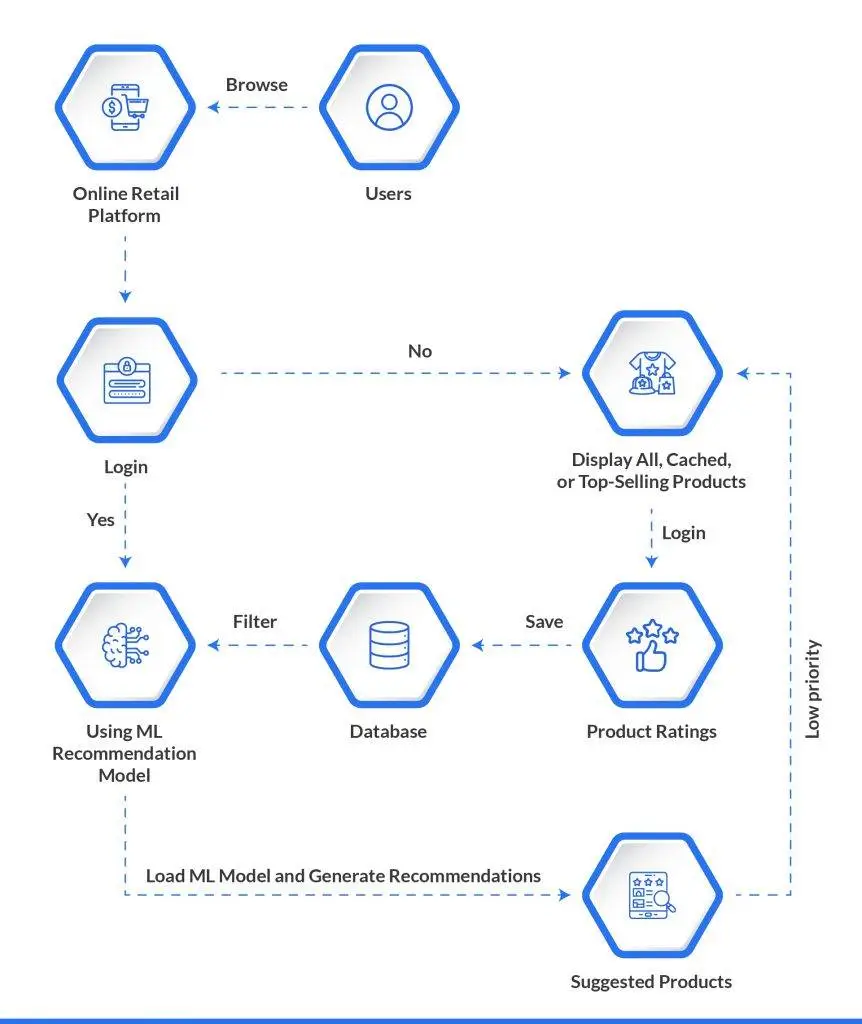
Advanced Product Recommendation Techniques to Use
Here are advanced product recommendation techniques to boost online sales:
Create Bundles for Top-Selling Products
Creating bundles for top-selling products is a highly effective product recommendation technique. It involves grouping the most relevant items that complement each other and then promoting them as a package. For instance, a retailer selling electronics could bundle a laptop with a mouse and a keyboard. This not only adds value to the customer journey but also encourages them to spend more.
An important example of this technique is the ‘Frequently Bought Together’ feature on Flipkart, which suggests product bundles based on what other customers have purchased together.
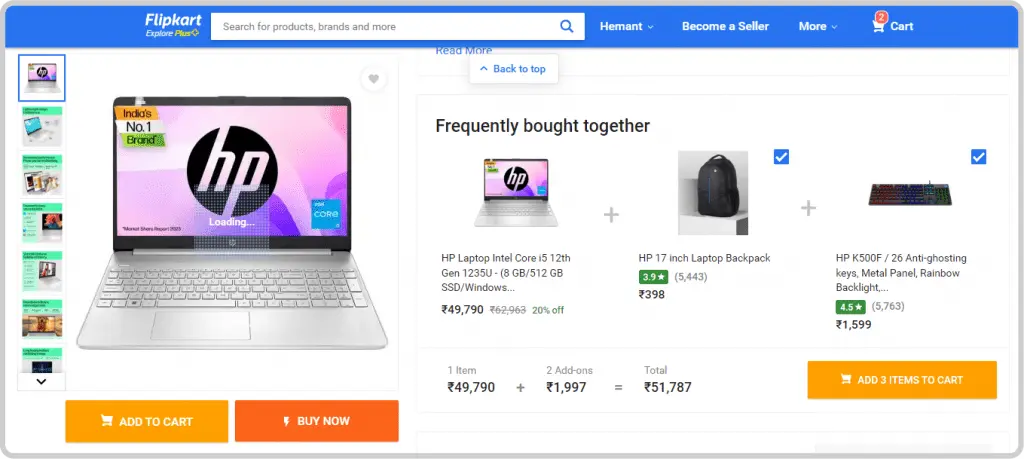
Source: Flipkart Website
Show Similar Products
Showing similar products is another powerful product recommendation technique. This technique works by suggesting relevant products that are similar to items which a customer is presently exploring or has shown interest in.
For example, if a customer is looking at a particular style of shoes, the system could recommend other shoes in the same style but with different colors or brands. Fashion retailers like ASOS and Zara widely use this technique to provide customers with a variety of options, thereby increasing the likelihood of a purchase.
Dynamically Show Recommendations After the ‘Add to Cart’ Action
Dynamically showing relevant recommendations after a customer adds a product to their cart is an effective technique that capitalizes on their engagement and readiness to purchase. This strategy is all about timing and relevance.
For instance, if a customer adds a camera to their cart, the system could recommend related items like a camera bag or a lens cleaning kit. This not only provides value to the customer but also increases the potential for upselling. Retail giants like Best Buy have effectively implemented this technique, where customers are shown relevant accessories and warranties after adding a product to their cart.
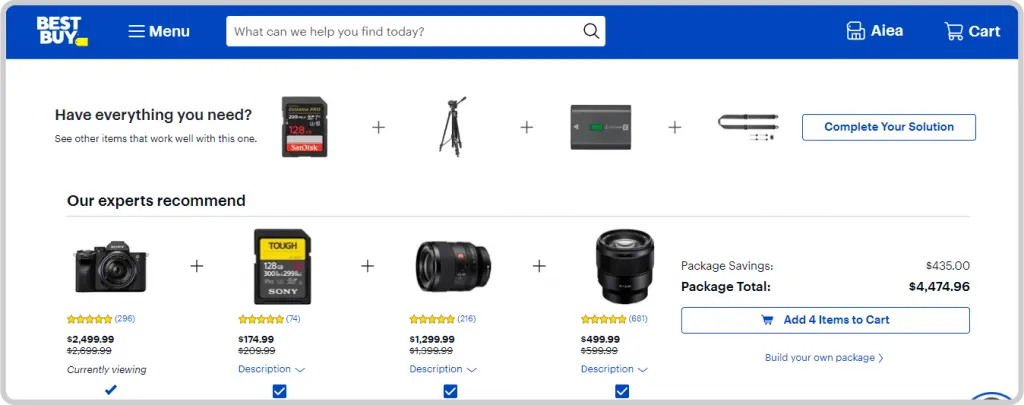
Frequently Searched & Previously Bought Products
Suggesting items based on what similar users have frequently searched for or have previously bought is another powerful product recommendation technique. This strategy leverages the customer interests to suggest suitable products, creating a bespoke shopping experience.
Walmart excels in this technique with its ‘Similar items you might like’ feature. This attribute suggests related products based on the purchasing patterns of similar customers, providing a tailored shopping method that anticipates consumer needs.
Show New Arrivals and Best Sellers
Highlighting new arrivals and best sellers is a great way to capture the customer’s interest. This technique works by showcasing the latest products or the ones that are popular among other customers. Encouraging customers to explore and discover new products. Fashion retailers like Myntra effectively use this technique, regularly updating their ‘New In’ and ‘Trending Now’ sections. This keeps customers informed about the latest trends and encourages them to make a purchase.
Use Tailored Recommendations for New Users
For new users who don’t have a browsing or purchase history, tailored suggestion is one of the most powerful product recommendation strategies. This strategy involves suggesting popular products or using demographic data to make educated guesses about customer preferences.
For instance, Netflix uses this technique effectively by recommending popular shows and movies to new users based on their selected preferences during sign-up. The tailored user journey encourages viewers to explore more content.
Show Daily Deals, Discounts, and Limited-Time Offers
Displaying daily deals, discounts, and limited-time offers is another effective product recommendation technique. This method works by creating a feeling of urgency and exclusiveness, motivating customers to complete the transaction.
Retailers like Walmart and Flipkart often use this technique, featuring ‘Deal of the Day’ or ‘Limited Time Offer’ sections on their platforms. This strategy helps drive and improve customer engagement by offering value deals.
Product Recommendation Technique Based on Page Type
These product recommendations can be shown throughout the retail website based on the context and with the intention of maximizing sales:
Home Page
The home page is often the first point of contact for customers, making it crucial for product recommendations, as it guides the users to explore the site. Retailers should focus on showcasing a variety of products to cater to the diverse interests of visitors landing on the home page. You can further customize the recommendations based on shopper types. For example, for first-time visitors, you can show the most popular items, whereas for returning customers, using an affinity-based approach is ideal such as showing recently viewed items
Product Page
On the product page, the recommendations should closely align with the item being viewed. When the shopper is learning more about a product, there is an opportunity to suggest similar or complementary items as well. By placing such related items at strategic locations on the product page, retailers have a better opportunity to increase the average order value.
Category Page
On the category page, recommendations should be closely related to the category being viewed. This will offer the shopper an opportunity to know which are the most popular products in the category. By showing the best-selling items, retailers can guide users towards products that best meet their needs in different categories.
Cart Page
On the shopping cart page, recommendations should complement the products in the user’s cart. When customers are on this page, they are just about to make a final buying decision and complete the checkout process. Here retailers can suggest items that are often bought together with the product by other shoppers. This approach presents upselling opportunities and also helps customers make purchase decisions quickly.
Product Recommendation Technique Based on Audience
As we said earlier, a one-size-fits-all approach will not work while selling online. You will get all types of visitors on your site – curious first-time visitors, loyal repeat customers, and casual browsers who are not ready to make the purchase yet.
To capture everyone’s attention, the product recommendation engine you choose should be able to distinguish between these visitors and recommend the products most suitable to each one. It should be able to segment customers by demographics and behavior and recommend tailored suggestions.
For example, it should be able to show new customers the most popular products, whereas if someone frequently browses your site but does not make a purchase, it should recommend the best product in the same category. Similarly, for your VIP customers, the platform should cater special discounts and promotions while showing them the items they were interested in the past.
By offering customized suggestions based on buying patterns and personal preferences, you can stimulate repeat purchases from your loyal customers.
Understanding Merchandising and Product Recommendation Interaction
The interaction between retailing and the product recommendation technique has an important role in shaping the user experience. While recommendation engines are powerful tools, they should not operate on autopilot. As a retailer, you should have the flexibility to set rules that align with your merchandising strategy.
Here are some rules you can set on the product recommendation platforms to achieve different goals:
- Seasonal Promotions: If your business has seasonal products, you can set rules to prioritize them in suggestions during the relevant season. For instance, swimwear during the summer season or cardigans during winter.
- Inventory Control: If certain products have high inventory levels, you can create rules to promote these items to help reduce stock levels.
- Price-Range Based Recommendations: As a retailer, you want to ensure that suggestions on your online store have a comfortable price range to keep the shoppers engaged. For example, you can set up a rule to recommend only those items that are within a +/- 20% price range of a product.
How to Optimize Your Merchandising Strategy with Flipkart Commerce Cloud?
- Marketplace Technology Stack: This comprehensive service helps retailers launch or expand their online marketplace. It encompasses over 40 plug-and-play components such as catalog, personalization, order management system (OMS), and seller management, among others.
- Retail Media Solution: A uniquely constructed advertising engine, this solution is rooted in understanding online shopping behaviors. By using advanced AI and ML algorithms, it places tailored ads based on the shopping intents of customers.
- Retail Pricing Manager: This tool aids retailers in discerning competitive pricing strategies. By tracking and analyzing competitor pricing in real-time and using ML to gauge price elasticity, the solution enhances pricing decisions for optimum profitability.
More Blogs
See how retailers and brands are winning with FCC
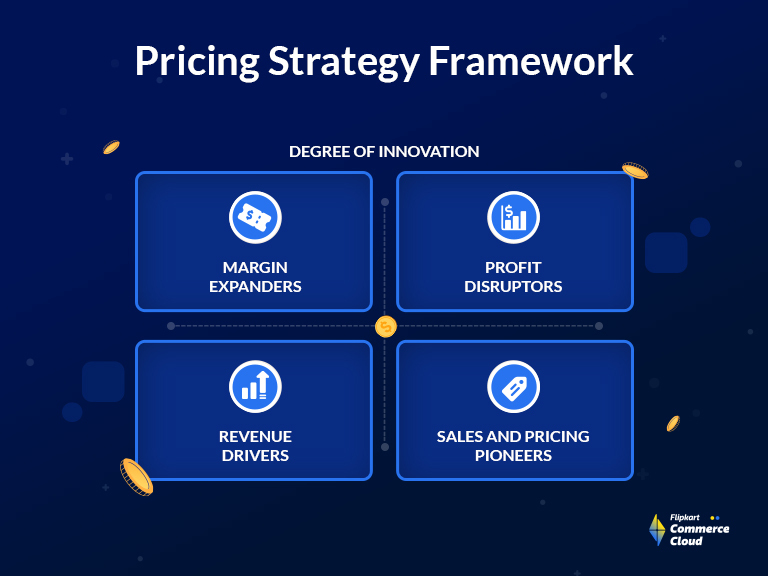
Mastering Pricing Strategy Framework
Read More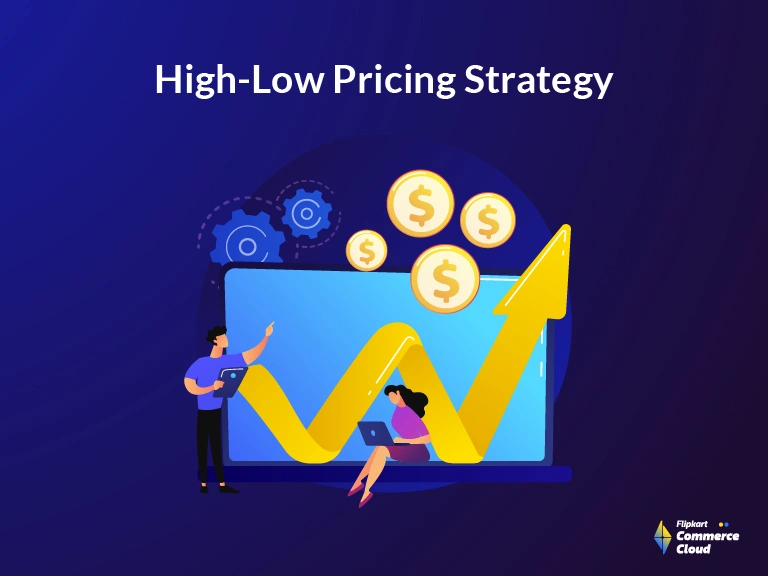
What is a High-Low Pricing Strategy?
Read More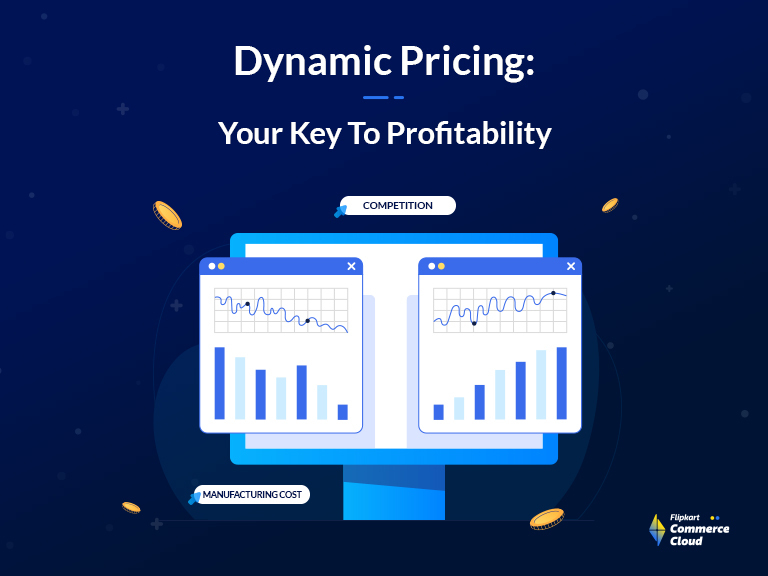
Ultimate Guide To Dynamic Pricing Strategy In 2025
Read More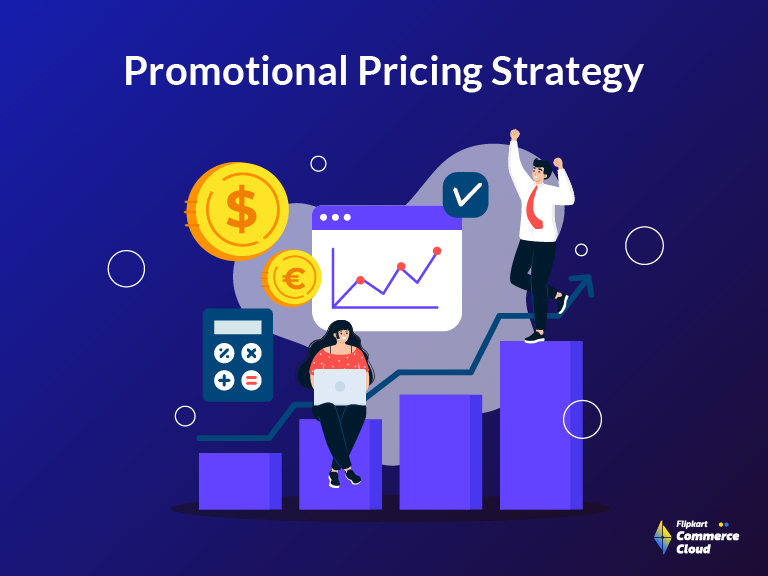
Retail Pricing Strategies: Winning with Promotion Pricing in Competitive Markets
Read More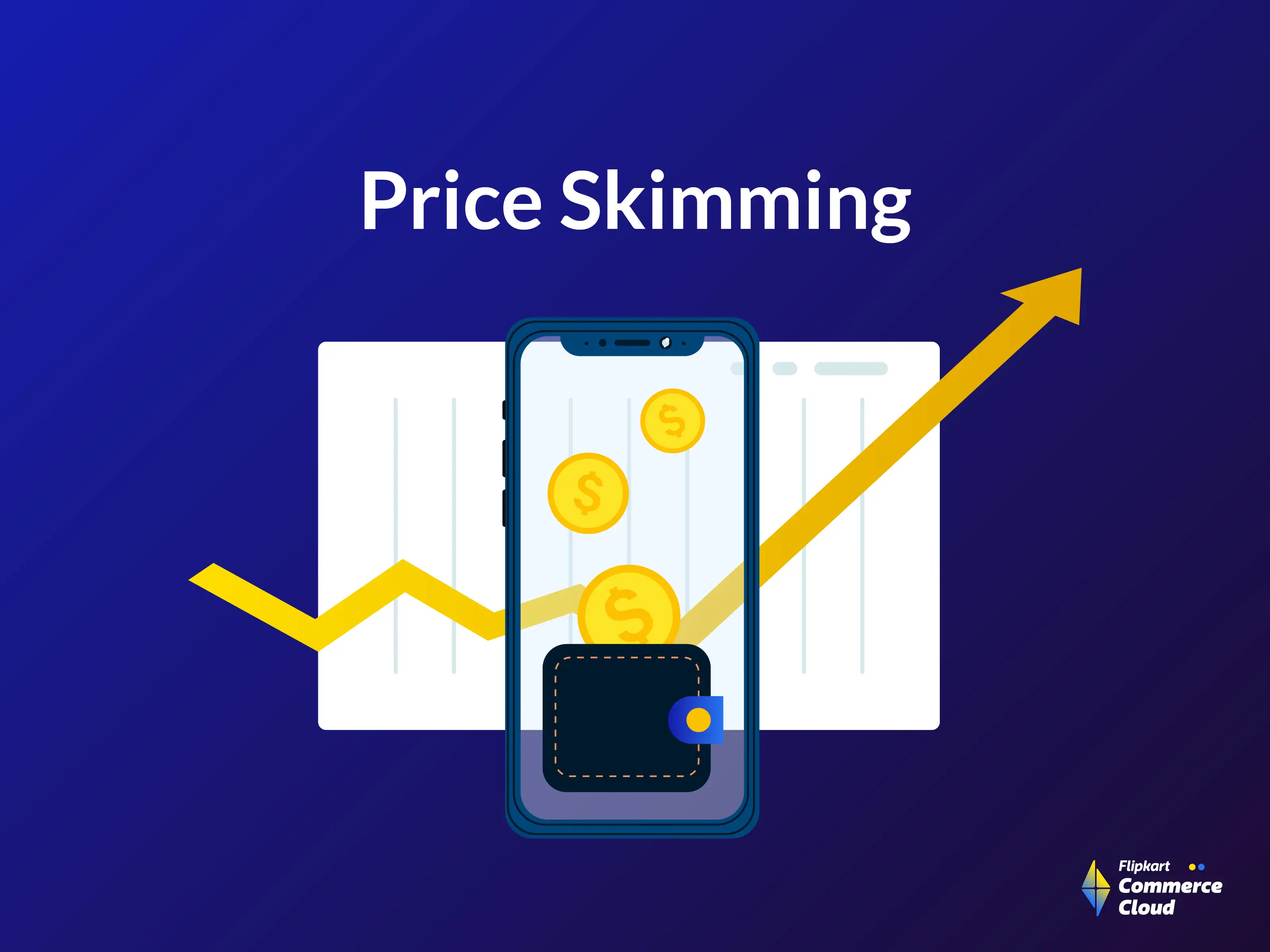
Everything About Price Skimming Strategy Explained
Read More
Mastering Pricing Strategy Framework
Read More
What is a High-Low Pricing Strategy?
Read More
Ultimate Guide To Dynamic Pricing Strategy In 2025
Read More
Retail Pricing Strategies: Winning with Promotion Pricing in Competitive Markets
Read More
Everything About Price Skimming Strategy Explained
Read More
Mastering Pricing Strategy Framework
Read More
What is a High-Low Pricing Strategy?
Read More
Ultimate Guide To Dynamic Pricing Strategy In 2025
Read More
Retail Pricing Strategies: Winning with Promotion Pricing in Competitive Markets
Read More